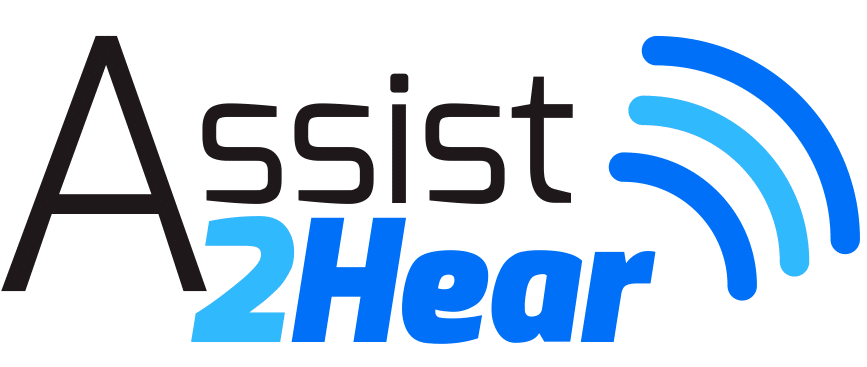Frequently Asked Questions
FM (frequency like a radio) and Infrared (direct line of sight like a TV remote) have been the traditional forms of assistive listening in the US for many years. Both meet ADA standards for assistive listening and communication access. Both are relatively inexpensive compared to a loop system. But neither FM or Infrared systems give the wonderful experience of a loop system. To use an FM or Infrared system, one must remove their precious hearing aids to wear a headset which most folks simply do not want to do. Not only to headsets mess up the ladies hair but there are sanitary concerns, battery issues, static from the frequency and one has to take the time and effort to seek out the headsets and typically leave an ID or deposit until they are returned. We find most FM and Infrared systems get very little use because of these issues. AND, both FM and Infrared simply amplify the sound which is not what hearing aid users need or want! Even if the venue has neckloops, which work with t-coils in hearing aids, the sound quality is inferior to a loop system. AND, if one has a pacemaker, insulin pump or other medical device, manufacturers recommend against use of neckloops for fear of interference with the device (see below).
Some venues have told us that they already have a loop system. There is some misunderstanding in many venues. Often when we are told that there is already a loop system, they are referring to a personal neckloop worn around the neck that works with t-coils but is connected to the FM or IR system in the room. The sound through these neckloops is often inferior with static over the radio waves. And since the loop “wire” is directly below the hearing aid/t-coil, the sound can come and go because there is a “null” when one is directly over a loop wire, whether it is the neckloop wire or the wire in a perimeter room loop.
A hearing loop system requires NO headset or neckloop for the t-coil equipped hearing aid user and the loop takes advantage of the user’s own hearing aid which is set for their hearing loss. The user merely walks in to the venue, turns on the t-coil setting on their hearing aid and enjoys the performance, presentation or sermon.The sound is sent from the loop directly to the hearing aid with no background noise, ambient noise, reverberation or static. Users comment that it sounds like the speaker is right in their head! And they would be correct since the loop send the sound directly to the hearing aid.
NOTE OF CAUTION REGARDING PERSONAL NECKLOOPS: Since a personal neckloop typically provided with an FM or IR system sets right over where a pacemaker may be, those with pacemakers, insulin pumps or other medical devices should not wear these neckloops. The magnetic field induced by these neckloops could potentially interfere with programming of devices or even heat up tissue in heart leads. Any magnetic field should be kept at least 6″ away from these devices. Read more in this article on Page 239 for information regarding pacemakers and potential risks. Location within a hearing loop field does not pose a risk – only having the magnetic field within close proximity to the pacemaker is a potential issue.
BOTTOM LINE – We Don’t Get Tears of Joy, Smiles Ear to Ear and Hugs when folks use FM or Infrared systems.
Loops and Bluetooth are like apples and oranges. Both are wireless technologies, but Bluetooth is a short range signal that must be “paired” with a phone or TV and typically requires an intermediate device to interpret the Bluetooth signal and convert it to a signal the hearing aid can accept and transmit. It is important to understand that there are no “Bluetooth Hearing Aids.” A loop has no range limit – one just needs to be “in the loop” area, as opposed to the short range Bluetooth signal. Loops do not require any intermediate devices since the signal is sent directly to the t-coil in the hearing aid. Bluetooth interfaces with phones and TVs but do not work in large venues. One major drawback of Bluetooth is power consumption, which is another reason an intermediate device, such as a streamer, is necessary. Most manufacturers agree that Bluetooth is not the wave of the future due to power consumption and a delay in the signal which can have negative effects on overall sound quality. In an interview with Jenny Groth, M.A., who is Director of Audiology Communication for ReSound, Jenny said “There are no hearing aids today that directly implement Bluetooth. So, every hearing aid that claims to be able to utilize Bluetooth has some sort of intermediate device that interprets the Bluetooth signal and then changes the information into a wireless technology that the hearing aid can accept and transmit.” Bluetooth works well with TV and phones using a streamer, remote, etc. while a hearing loop system needs no intermediate device, uses literally no power from the hearing aid and is only limited by the size of the loop. The good news is that one can have BOTH Bluetooth and a t-coil in their hearing aids to maximize hearing is different situations.
Read this blog for more information about bluetooth and telecoils in hearing aids…..
Assistive Listening Devices (ALDs), also known as Personal Listening Devices (PLDs), can be an alternative to hearing aids for those with mild hearing loss or that cannot or will not pay the price for hearing aids. However, ALDs can also enhance the hearing aids by helping them hear better in different environments. Assistive Listening Devices can work with the T-coils in hearing aids to help avoid aggravating background noise. Products for TV, audio (music and MP3s), phones and public places are available with earphones/earbuds and headphones for use without hearing aids or with neck loops for use with T-coils hearing aids.
